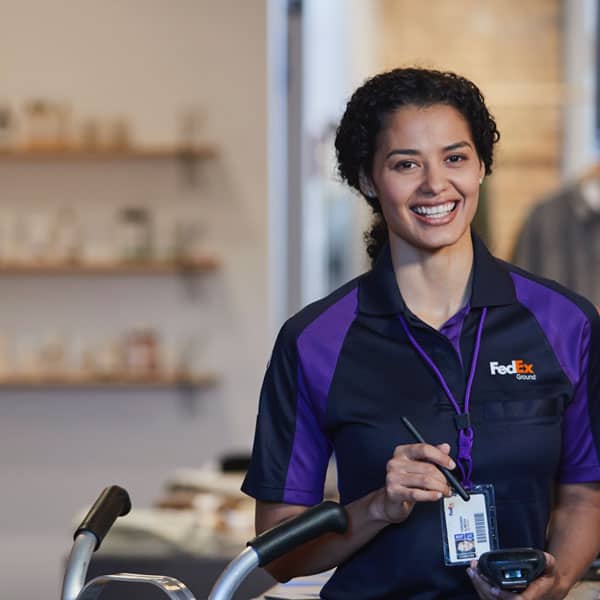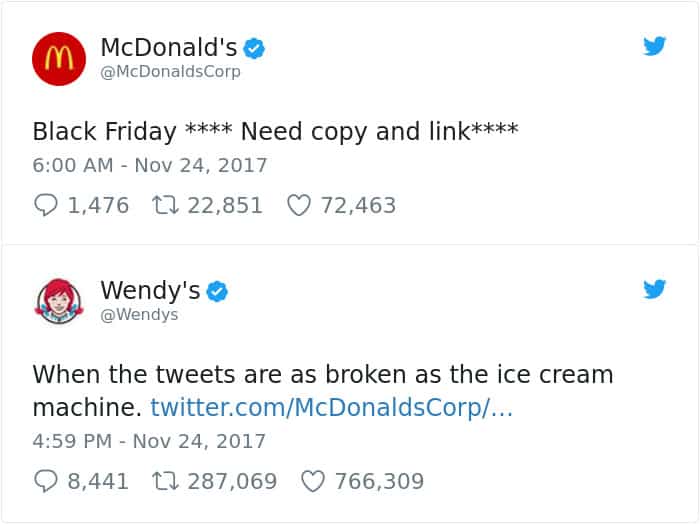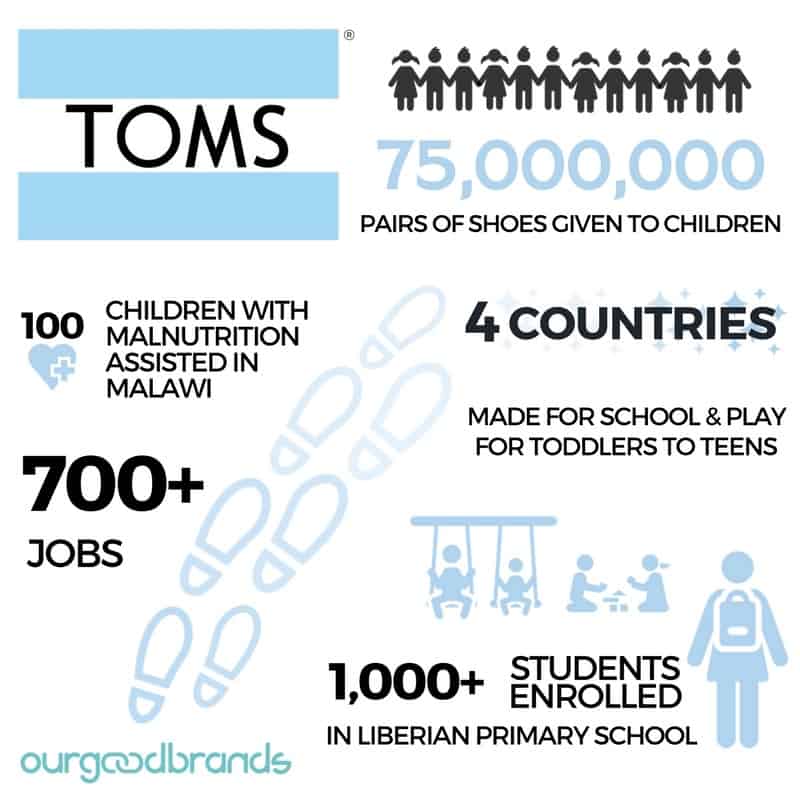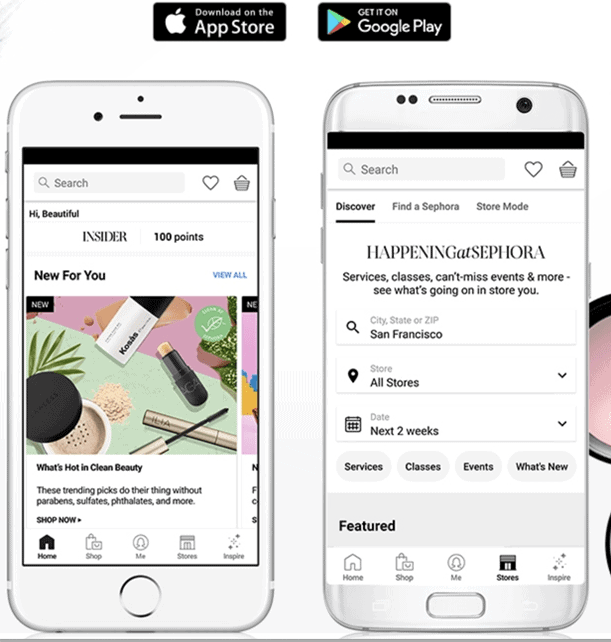It’s no wonder that 78% of the customers prefer the omnichannel customer engagement approach as it helps them connect with their favorite brands in multiple ways. Consequently, this percentage justifies the increasing number of companies investing in the omnichannel experience. In 2020 the rate jumped from 20% to 80%, with the vast majority of retail experts grinding to find an answer to a very serious question; how to improve customer engagement and why it is so important.
If we were to define customer engagement we would say that it “refers to the combination of behavioral responses with an emotional context” (Vivek S., ‘Customer Engagement: Exploring Customer Relationships Beyond Purchase’, Journal of Marketing Theory and Practice, vol. 20, no. 2, 2012, pp 131.). In other words, customer engagement includes and is dependent on the emotional connection between a brand and its customers. Brand loyalty and customer lifetime value are direct derivatives of that connection since consumers tend to spend more on businesses that they share a sentimental attachment.
Table of Contents
Why Customer Engagement Matters in Retail?
Consumers respect and desire cohesion and continuity. Engagement must be consistent, and extend across all touchpoints of the customer journey, along with each brand’s vision and mission. Circumstantial engagements or simple marketing ruses will only drive consumers away and achieve the opposite result. Customer engagement starts from identifying the needs of each customer and addressing their pain points personally.
People, and thus customers, are inclined to feel loyal to what they love, so brand loyalty is influenced by customer engagement. When businesses personally engage their audience, consumers associate these brands with meaningful communication and functional or symbolic advantages. This bond originates from pragmatic interactions that later transform into emotional considerations and the satisfaction of the consumers’ needs.
Consumer-brand relationships create a cause-and-effect conjunction. Successful customer engagement leads to brand loyalty, and brand loyalty leads to customer retention. Conversion and retention are interconnected with customer lifetime value; the longer customers stay loyal to your brand, the more likely they are to increase your CLV. This is why retailers invest more resources and budget into R&D, struggling to find new, creative yet meaningful ways to improve customer engagement and, thus, deliver a memorable customer experience.
Examples of how 30 popular brands improved customer engagement
Example #1: Casper’s Chatbot for insomniacs
Why we liked it:
- Customer persona understanding at its best: In 2016, Casper, a mattress company with expertise in the culture of sleep, advanced its services by creating an AI chat operating in late hours. Casper designed this chatbot for those with trouble sleeping, a byproduct of understanding and attracting their segmented customers.
- Attracted tons of press: The startup named the AI Insomnobot3000 and made it recognize common phrases and pop culture references. Who wouldn’t want to hold a conversation with an AI that knows about the finale of Stranger Things?
- A friendly companion: For those with trouble sleeping, nights are kinda lonely. Casper nurtures the consumer-brand relationship and creates a deeper rapport with its clients by keeping company to the night owls.
Example #2: Amazon’s “Amazon Go” store concept
Why we liked it:
- Diversification: Amazon started as an online bookstore and now it is the largest digital marketplace, AI provider, live streaming platform, and cloud computing platform in the world. Currently, it sells literally everything with its store now occupying six football fields.
- Innovation: From the exemplary one-day shipping services to the Echo AI and the latest Amazon Go store, the brand is always one step ahead of its competitors. The Amazon Go concept revolutionizes retail as we know it, offering for the first time a checkout-less shopping experience and beating the biggest pain of any retail store; the checkout lines. If this isn’t Innovation what is it?
- Customer Obsessed : 20 years ago, Amazon made a promise to its customers and has kept its word. This retail giant offers such an incredible digital experience that 9 out of 10 times there is no need to contact the customer support department.
Example #3: Apple’s phenomenal repositioning
Why we liked it:
- Strong positioning: In this campaign, 24 years ago, Steve Jobs managed to associate Apple with a lot of influential people that made a considerable impact on a global scale. He redirected the brand from its products to its core value, engaging customers and entrepreneurs alike.
- The “Apple Experience”: Since its conception, Apple has placed its customers at the forefront. Forbes Contributor, Carmine Gallo explained in detail how a personalized customer approach and a deep understanding of the customers’ needs are paramount to improve customer engagement in retail.
Example #4: Netflix’s targeted propositions

Why we liked it:
- Segmentation done right: Netflix has been around much longer than most of us know but became relevant a few years back. Once they realized that what was missing was a targeted and unique experience for each member, their subscribers skyrocketed from 21.5 million to 158 million in 8 years. Automated personalized recommendations were the missing link.
- Free-month trial: This strategy significantly increased the brand’s awareness through word-of-mouth since everyone loves a free trial. After a sneak peek, Netflix’s target audience was coming back wanting more.
Example #5: Nike’s mobile app engagement and stand on social injustice

Why we liked it:
- Nike’s mobile apps: Nike takes customer engagement to the next level with the creation of a series of apps integrated into the everyday routine of its customers, namely the Jordan Breakfast Club and the SNKRS.
- Nike Live Store: For those loyal to the retail giant, Nike created an exclusive store for its Plus members. Built as a service hub, the Nike Live Store is based on an experimental digital-meets-physical approach. The NikePlus members have access to rotating, exclusive products and digital features in a special brick-and-mortar store.
- Nike and Colin Kaepernick: It is incredibly important to acknowledge the fact that Nike, against all negative responses, all odds, and a 2% drop of its share price, chose to stand by the American football player. Nike’s affiliation with Kaepernick’s protest against social injustice has been the most controversial move the brand has ever made and was also praised by figures like LeBron James and Serena Williams.
Example #6: IKEA’s incredible AR app
Why we liked it:
- Fusing customer engagement with technology: IKEA was one of the first companies that delivered omnichannel customer engagement using video calls and augmented reality. Transferring the in-store experience to the digital world, the IKEA AR application allows customers to visualize their chosen products from the comfort of their homes.
- Brick-and-mortar: IKEA’s takeaway on how to improve customer engagement was implemented through the years via its immersive in-store experience. As a result, its audience has stayed loyal to the Scandinavian brand for 75 years. This expertise, coming directly from the in-store shopping experience was brilliantly transferred to the AR app.

Example #7: Fender’s appreciation to its audience
Why we liked it:
- Fender Play App: A company needs to keep its audience invested even after the purchase of its product. Fender managed to do that through subscription-based online lessons for those that were not familiar with playing a musical instrument.
- A strong relationship: Customer engagement is a means to end, with the endgame being retention and brand loyalty. Fender has made it its priority to communicate with every guitar player, from the novices to the virtuosos, thus winning their long-lasting appreciation.
Example #8: Uber’s customer-centric vision
Why we liked it:
- A startup that is here to stay: Innovative ideas are not only for legacies but for new companies with a distinct vision. Uber managed to stay ahead of the curve with a new take on transportation, safety-first regulations, and excellent customer service.
- Loyalty must be rewarded: Like any brand that respects its customers, Uber created a point-based reward system that honors loyal customers that stand by them.
Example #9: FedEx values its workforce and it shows
Why we liked it:
- Educating your staff: If you’re still wondering how to improve customer engagement for your brand, the devil lies in the details. FedEx invested in the education of its personnel so that they can deliver the best experience possible and the results speak for themselves.
- Empowering your employees: You cannot expect success if those who work for and with you are not happy with your work environment. Communication between the workforce and the management will bear fruits, just like it did for this company.
Example #10: Duolingo made language learning fun (…and a little competitive)
Why we liked it:
- Variation: Half the work in creating the need for your product (or your service) to the consciousness of the consumer is a new, fresh idea. Duolingo took advantage of the people’s need to learn a new language and improved its customer engagement.
- Gamification: The term gamification describes a recent hype that has recently caught on and focuses on using gaming elements in a non-gaming context. Duolingo created an app that employs said elements to rank its users in leagues; the more points the “player” scores in each test, the higher the rank and the reward.
Example #11: Wendy’s roasts on social media
Why we liked it:
- Interactive social media presence: Wendy’s famous sassy tone on social media, especially Twitter, is what makes this brand stand out. The sarcastic and witty interactions are almost a “trademark” for Wendy’s, entertaining its audience and keeping it constantly engaged.
Example #12: TOMS’s global impact
Why we liked it:
- Sensitive to social causes: TOMS was always an advocate for social change and its donation strategy was implemented from the start. Donating a pair of shoes for every pair sold is the cornerstone of the business. Later on, they created an entire webpage named “Your Impact”, stating the causes that their customers have supported over the years.
Example #13: ASOS knows the power of Instagram
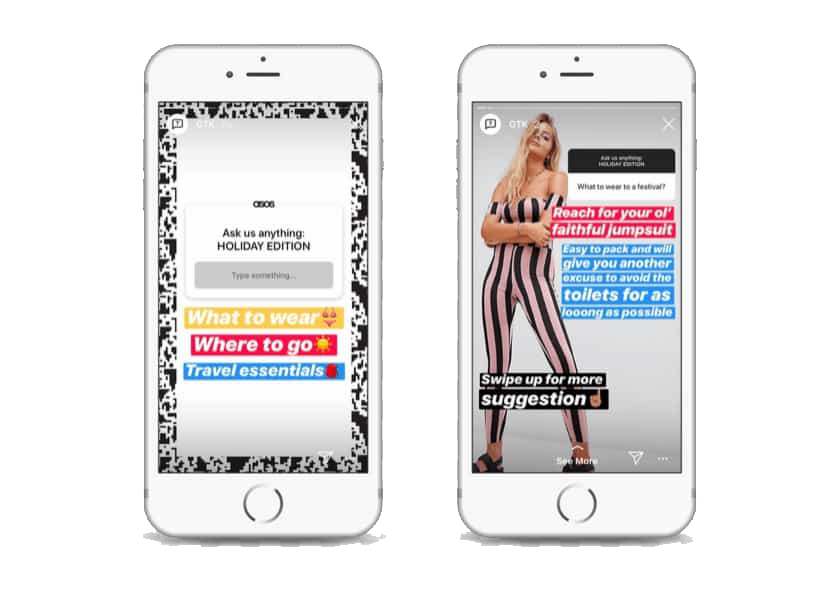
Why we liked it:
- User-generated content: Branded hashtags are a remarkable idea for improving customer engagement and this retail wonder has done it right. Consumers use the hashtag #AsSeenOnMe to show their new purchases and be featured on the company’s Instagram or Facebook accounts.
- Influential marketing: ASOS has created a small “army” of Instagram influencers around the globe. When they upload an outfit to their personal accounts they include the product codes in the image caption.
Example #14: LVMH’s advocacy for innovation and entrepreneurship

Why we liked it:
- Supporting other entrepreneurs: For the last five years, the Group calls to action upcoming companies across the globe to participate in their annual Innovation Award. Supporting ambitious startups with a customer-centric theme is an interesting, classy marketing idea on how to improve customer engagement, and being associated with creativity and excellence is a huge plus in itself. LVMH challenges innovative ideas in omnichannel & retail, media & brand awareness, data & IA, operations & excellence manufacturing, employee experience, and sustainability.
Example #15: Condé Nast’s respect for the environment

Why we liked it:
- Impactful sustainability strategy: Condé Nast stands by the Intergovernmental Panel on Climate Change’s position regarding man-made climate change and wishes to inspire its readers to take action on such a serious matter. Customer engagement includes using one’s influence for a meaningful cause, delivering high standards, and leading by example. Condé Nast recognizes its responsibility to its readers and is committed to introducing new initiatives to support breakthroughs of sustainable practices.
Example #16: Trader Joe’s high standards
Why we liked it:
- Striving to make customers happy: The fact that Trader Joe’s has the second-highest score in the American Customer Satisfaction Index (ASCI), is saying a lot about their quality of service. The brand is famous for its quick response times and the ability to go above and beyond to satisfy its customers.
Example #17: Sephora’s amazing culture on customer engagement
Why we liked it:
- Customer engagement royalty: Sephora’s philosophy is dedicated to improving customer engagement and they hold a special place in the retail big leagues. With a personalized omnichannel culture and an authentic business strategy, they have radically altered the way companies conduct business.
Example #18: Best Buy got a second chance and made it count

Why we liked it:
- Changing for the better: In 2020 the retail tech store Best Buy survived Amazon’s threat after revamping its whole service experience. Hiring a new CEO and introducing two new customer-centered initiatives (Renew Blue and Best Buy 2020) was divine intervention and ultimately saved them from bankruptcy.
Example #19: How Target was saved by the omnichannel experience

Why we liked it:
- Snatching victory from the jaws of defeat: Another bright example of a company living to fight another day is Target. The company completely renewed its fundamentals and got back in the retail game by creating a seamless experience between the digital and the physical.
Example #20: DHL’s global Innovation Centers
Why we liked it:
- Success comes from within: DHL acknowledges that engaged customers derive from invested employees. The logistics company reorganized its priorities, thus bringing about an employee-friendly culture.
- Thought leadership on innovation: For DHL the answer on how to improve customer engagement came from putting innovation into practice. In 2015, the enterprise rebuilt its Innovation Center in Bonn, Germany, and opened two brand new ones, in Singapore and Chicago.
Example #21: Cisco’s famous cloud services

Why we liked it:
- Digital transformation: Cisco went through a massive digital metamorphosis and advanced its products to cloud-based and subscription models. Additionally, Cisco Meraki is the leader in cloud-controlled WiFi and routing.
Example #22: Polaroid Originals loyalty programs
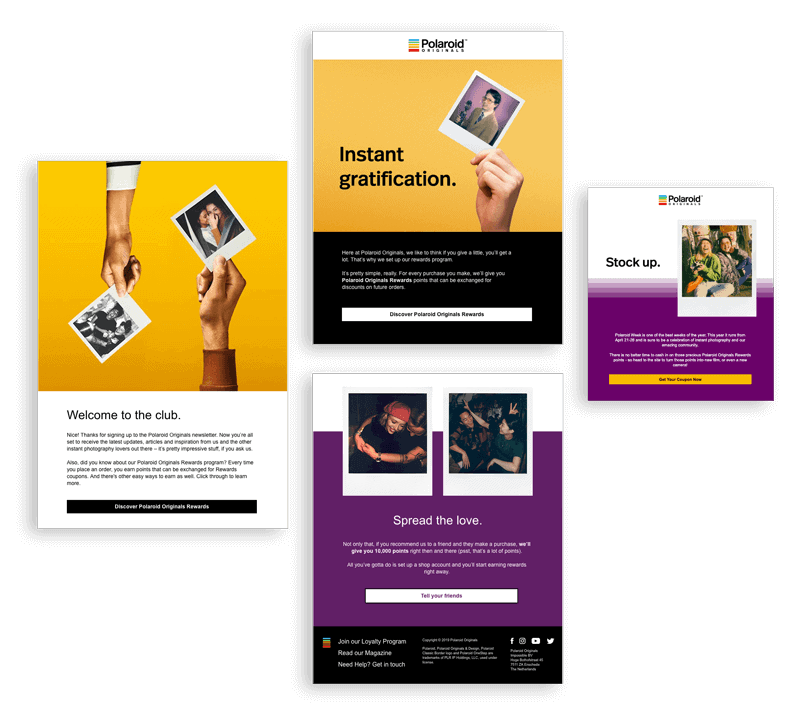
Why we liked it:
- Finding incentives: Loyalty rewards are surely a very common way to improve customer engagement, but it has to be done right. Polaroid Originals combine three different marketing strategies: customer satisfaction, word-of-mouth, and increasing their audience on social media. All with the right motivation.
Example #23: Ford’s unique mobile application

Why we liked it:
- Providing mobility solutions: The automotive company Ford created the FordPass app redefining the relationship between a car and its owner. The app offers incredible services to the users; accessing valuable information on their vehicle, requiring assistance on the road, or collecting points and earning rewards for future maintenance services.
Example #24: Alaska Airlines’ leading positions in J.D. Power

Why we liked it:
- Number one for 12 years: For 12 consecutive years, Alaska Airlines has ranked first among Traditional Carriers in the J.D. Power North American Airline Satisfaction Study. In 2019, the airline won with the best score ever, gathering overall 801 points on a 1000 scale.
Example #25: When in doubt, trust Yelp and TripAdvisor
Why we liked it:
- The importance of customer testimonials: Although these two brands are based on different concepts, they share the same core: the power of the customers’ review. Reviews can make or break a reputation, and these two companies recognize the importance of giving customers a voice. Their followers can make informed decisions based on what they are looking for, which is why these companies have thrived.
Example #26: HSBC’s bilingual chatbot
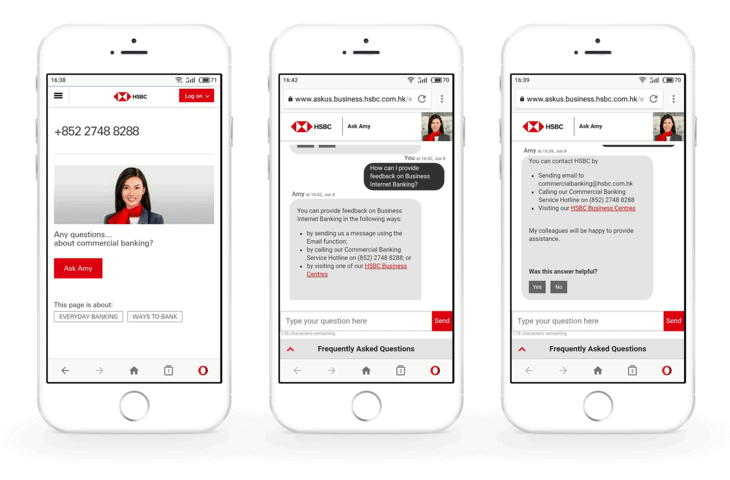
Why we liked it:
- AIs are taking over: Chatbots are the latest trend since their undisputed benefits. Faster 24/7 interactions, personalized conversations, and cost-efficiency are only a few of the reasons why the HSBC Hong Kong branch built Amy. The self-learning, bilingual bot has been the bank’s virtual assistant since 2018.
Example #27: Sleep Number’s principles

Why we liked it:
- Opting for the human approach: The Minnesotan manufacturer reached a triple-digit growth in e-commerce revenue during the pandemic all because they acknowledged the imperative need for a strategy change. The company managed to adapt to the changing conditions following three basic principles: recognizing their customers’ new behaviors, researching analytics, and investing in the omnichannel experience.
Example #28: Marks & Spencer’s 137 years of experience

Why we liked it:
- M&S’s partnering with Rant & Rave: After so many years in the retail industry, M&S knew that they had to keep up with the needs of their customers. In 2018, the retailer introduced an easier way to receive feedback from customers across a variety of channels (email, webchat, SMS, and Interactive Voice Response).
- Communication is vital: In 2019, Jo Moran, Head of Customer Services at M&S, highlighted that “communication is everything in keeping our colleagues aligned to customer care initiatives and the wider customer-centric culture”. In light of these statements, the brand has made significant changes in its operations to boost the omnichannel experience and ensure a seamless customer journey.
Example #29: Tesco’s innovative customer engagement strategy
Why we liked it:
- The World’s First Virtual Store: Tesco was the first retailer ever that introduced the idea of the virtual grocery store in 2011. The South Korean subway was the first place this idea was implemented and the results were astonishing; a 76% rise in new memberships, a 130% increase in online sales, and South Korea’s no1 online grocery retailer.
Example #30: John Lewis’s virtual appointments

Why we liked it:
- Quarantine made better: John Lewis could not be omitted from this long list of successful brands. The Covid-19 quarantine was a difficult time for non-essential retailers but John Lewis managed to stay relevant and make the best out of it. The British retailer found a very fun and practical way to make its customers’ quarantine a little easier. The collective took advantage of the teleconference frenzy and introduced a series of online appointments via Zoom for personal styling, home improvement, and a lot of virtual events for its exclusive members.
Turn inspiration into engagement
Finding inspiration is half the battle, the other half lies in implementation, and customer engagement requires a holistic approach and dedication to the process. The most important part of achieving growth is execution and the ability of leadership to convert trends, data, and ideas into action.
Researching customer behavior and using retail customer engagement platform to improve engagement is the first step. Moving forward, strategies and inspiration will come naturally once a brand’s positioning is more clear and more data-driven. Moreover, keep in mind that monitoring your progress is valuable and will aid you to learn from past mistakes.
Last but not least, consistency, omnichannel communication, and personalized targeting are mandatory for success. Technology has offered us a variety of gifts over the years, so do not be afraid of trying new things for your business. Fortune favors the bold and boldness will favor your balance sheets.
Tip: read some customer engagement strategies for the tourism industry to get a more holistic idea about customer engagement.

Let’s Help You Scale Up





